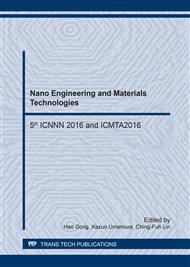p.37
p.42
p.48
p.55
p.59
p.64
p.69
p.74
p.81
Microstructure and Final Properties of Cold-Rolled Ti-32.5Nb-6.8Zr-2.7Sn-0.3O Biomedical β Titanium Alloy
Abstract:
Ti-32.5Nb-6.8Zr-2.7Sn-0.3O (TNZSO, wt%) alloy was melted under a high-purity argon atmosphere in an electric arc furnace, followed by cold-rolling. The effects of rolling process on microstructures and final properties were investigated using OM, XRD, TEM, TMA and universal material testing machine. Results show that no stress-induced α" martensite transformation occurred after cold-rolling. The plastic deformation mechanisms of the alloy were related to {112}〈111〉 type deformation twins and dislocation slip. With the increase of cold deformation reductions, the elastic modulus slightly decreased owing to the increase of dislocation density. The 90% cold deformed sample exhibited a great potential to become a new candidate for biomedical applications since it possesses low elastic modulus (55.3 GPa) and high tensile strength (1093 MPa), which are superior than those of Ti-6Al-4V alloy. The coefficient of thermal expansion was also low (~6×10-6°C-1 between 25 and 320°C) in the 90% CR alloy.
Info:
Periodical:
Pages:
59-63
Citation:
Online since:
March 2017
Authors:
Price:
Сopyright:
© 2017 Trans Tech Publications Ltd. All Rights Reserved
Share:
Citation:


